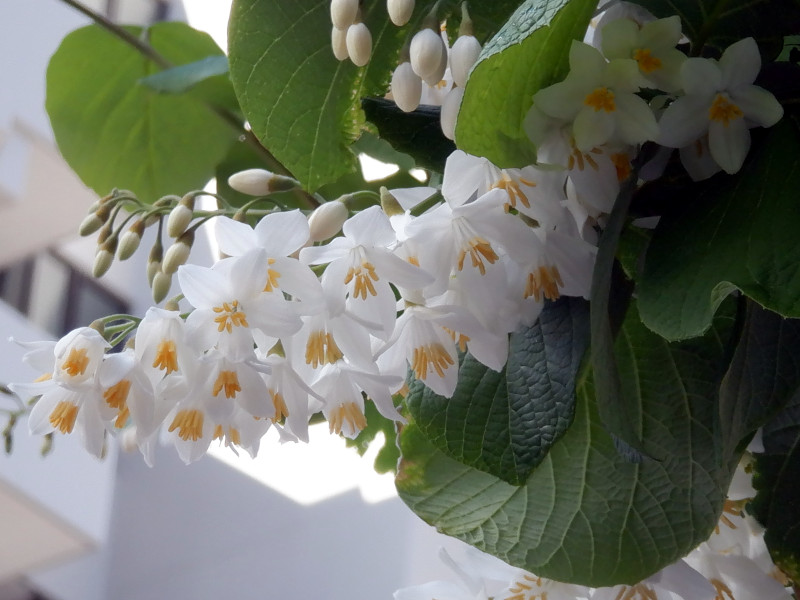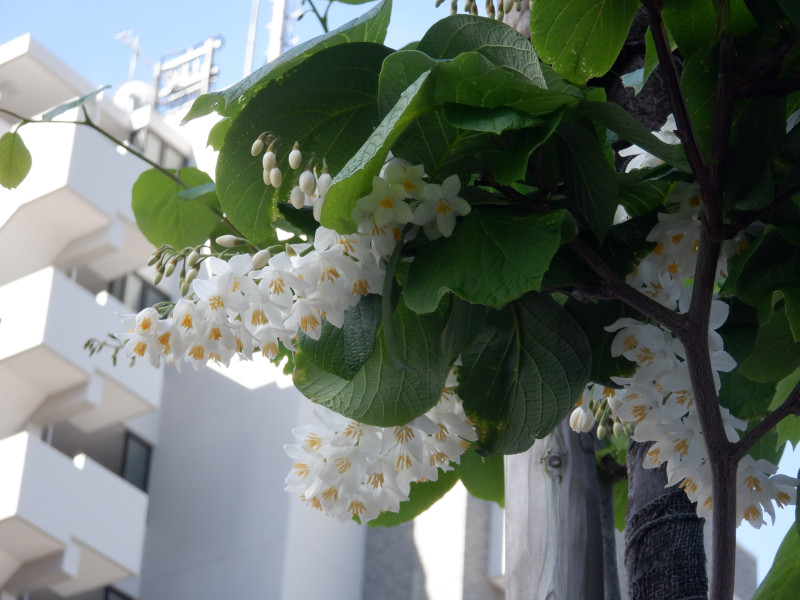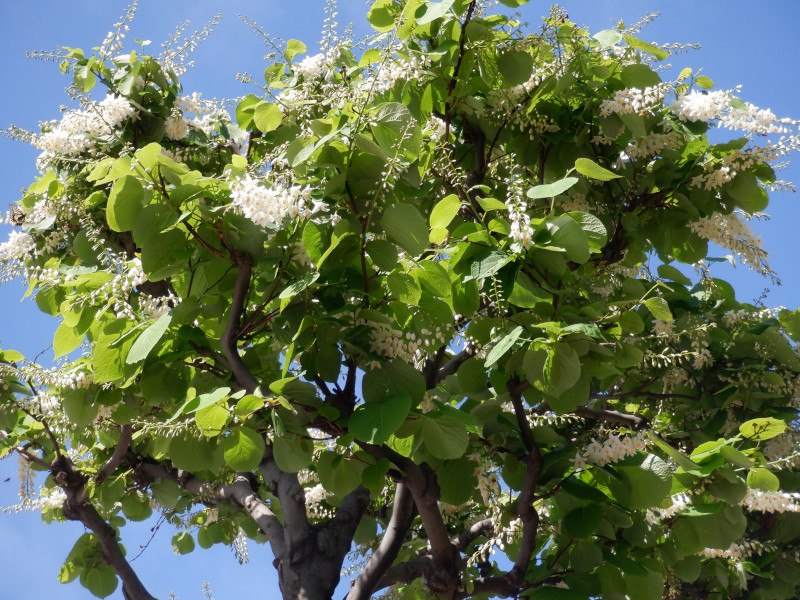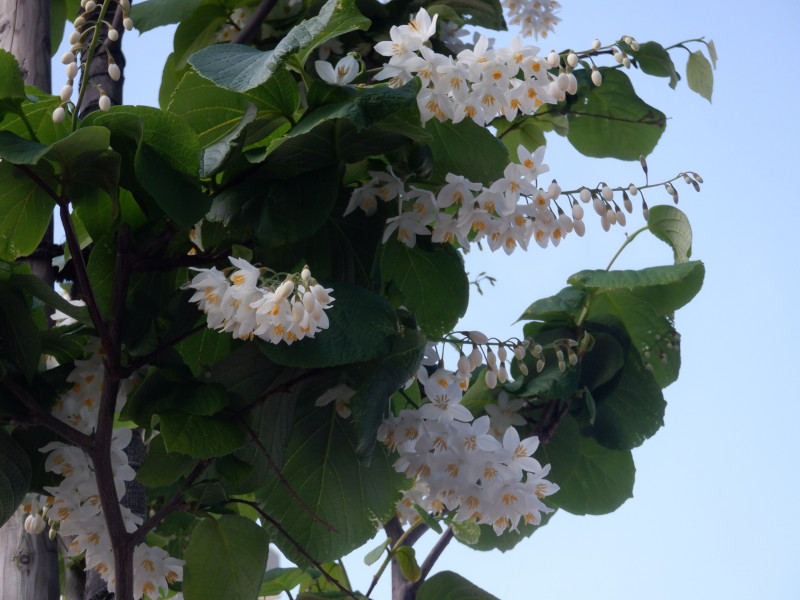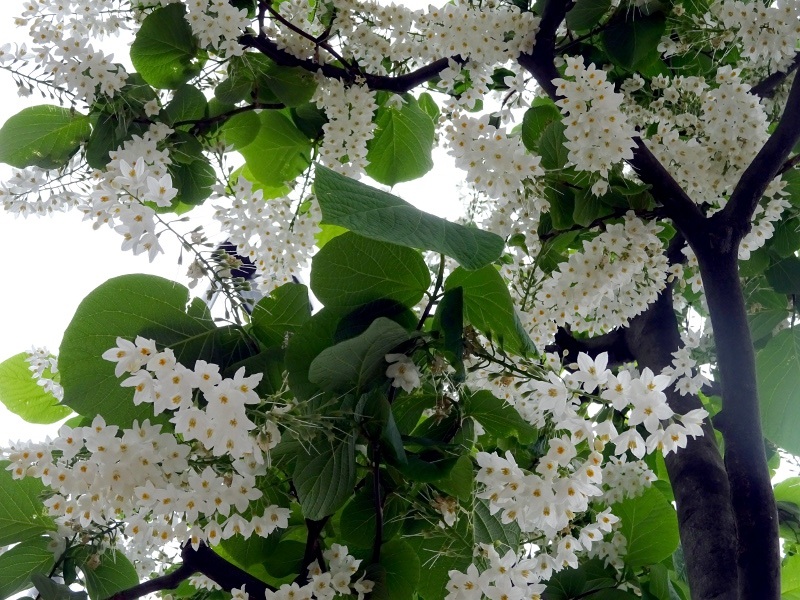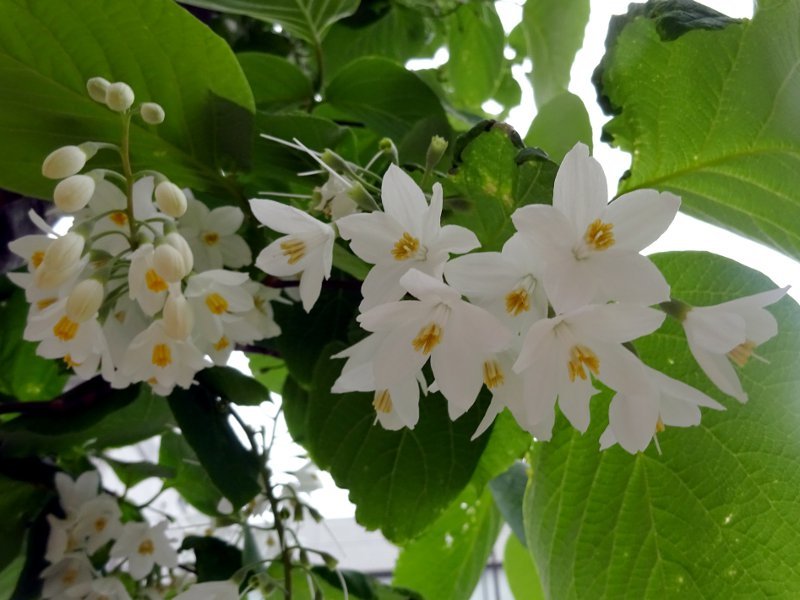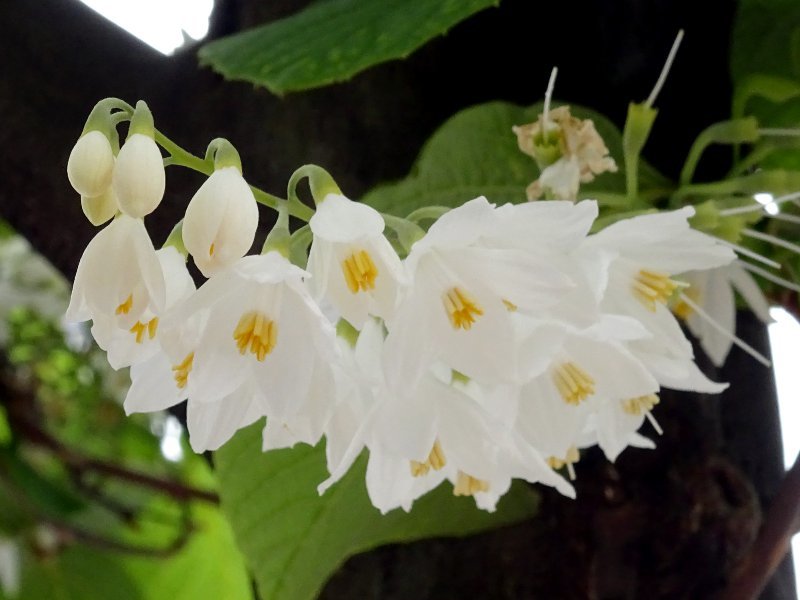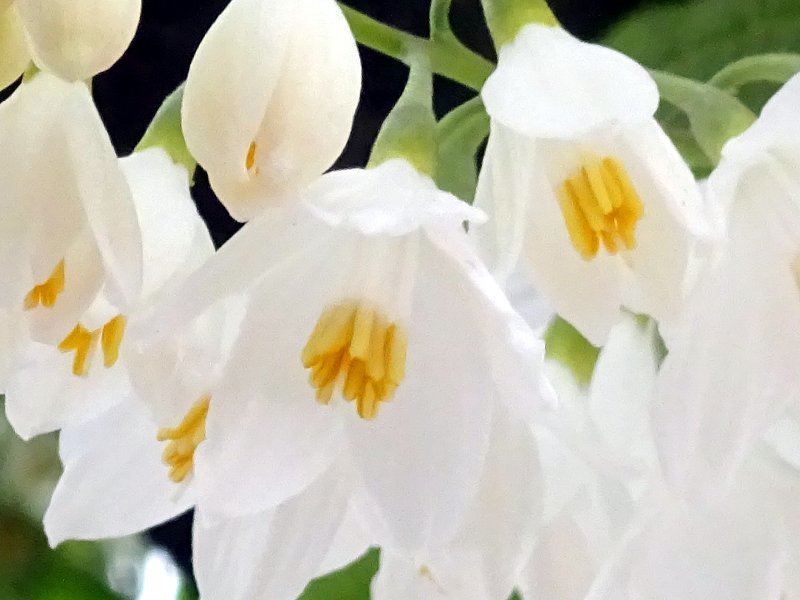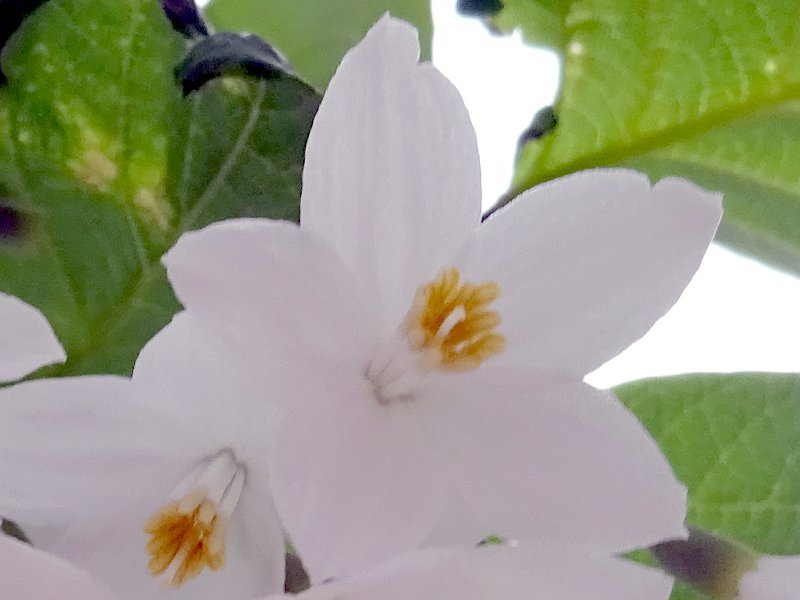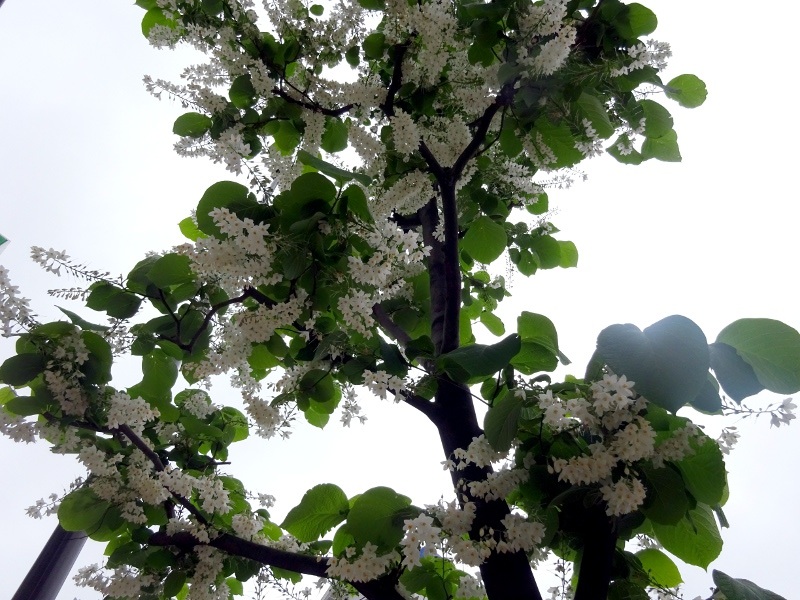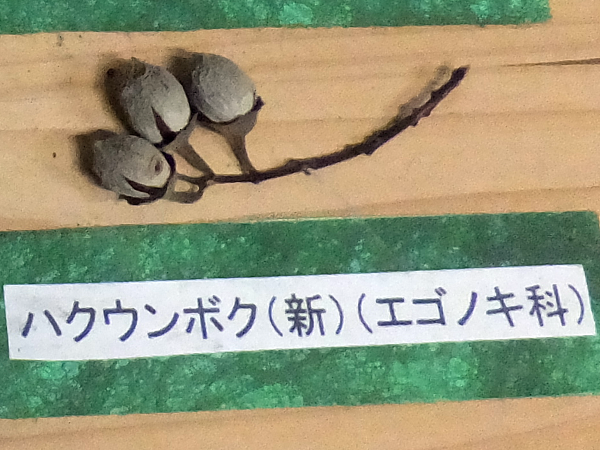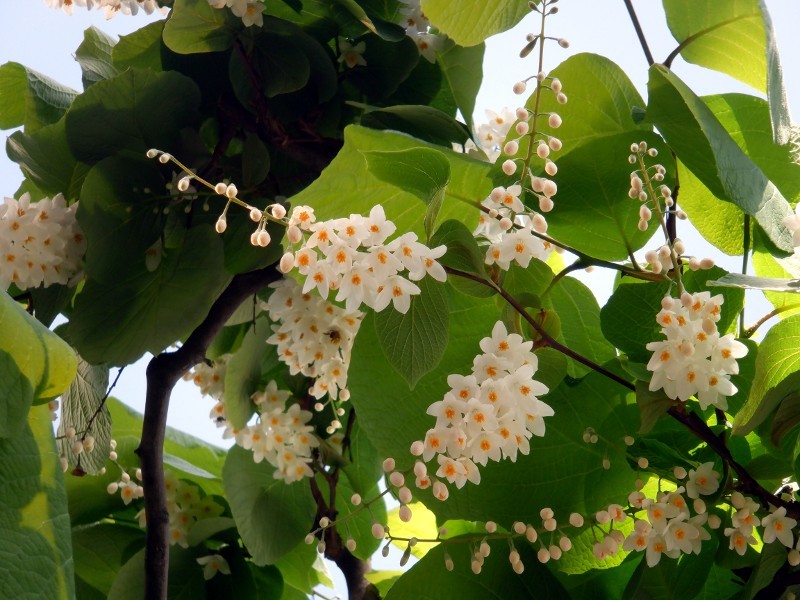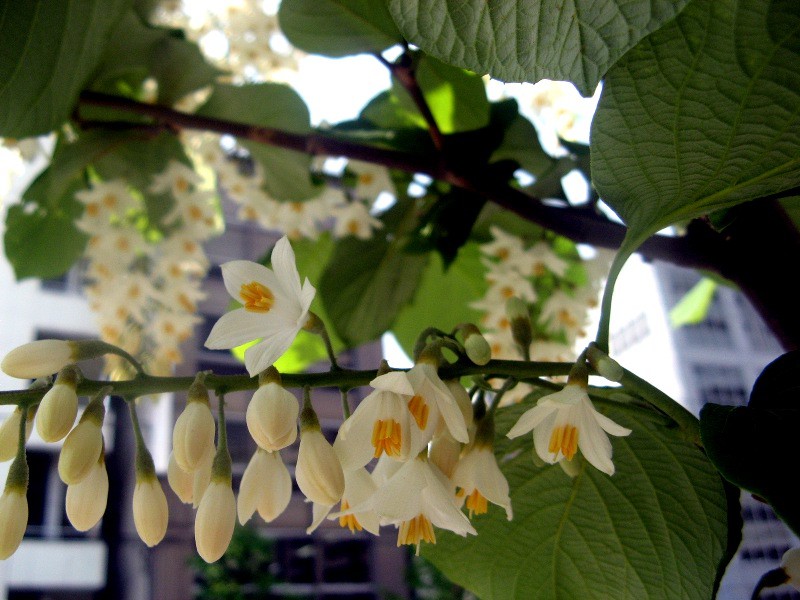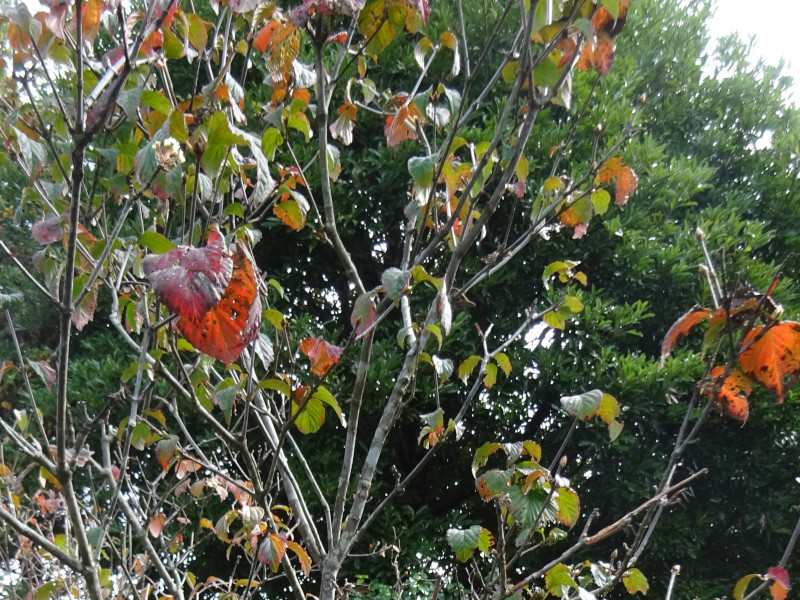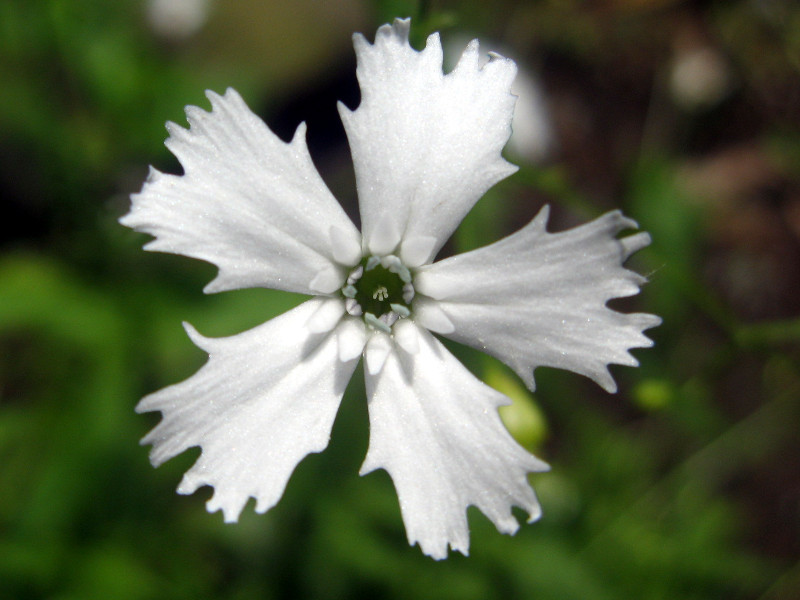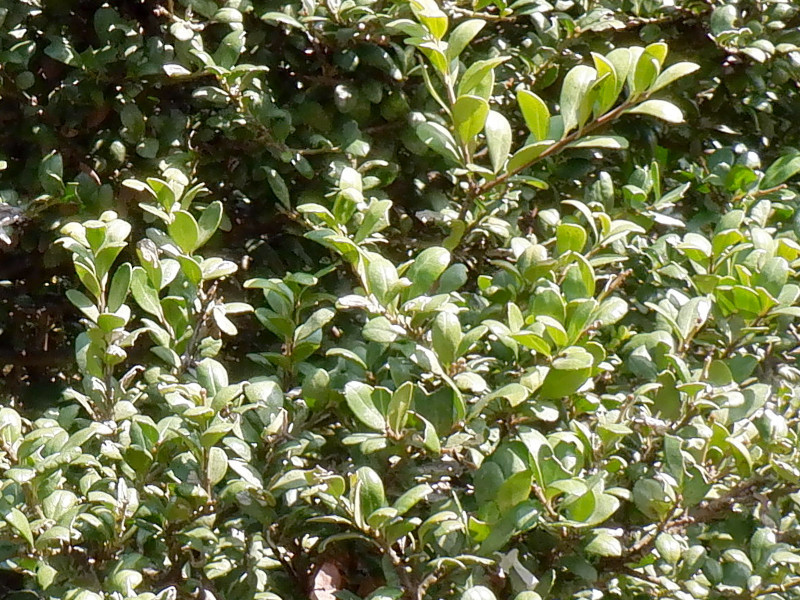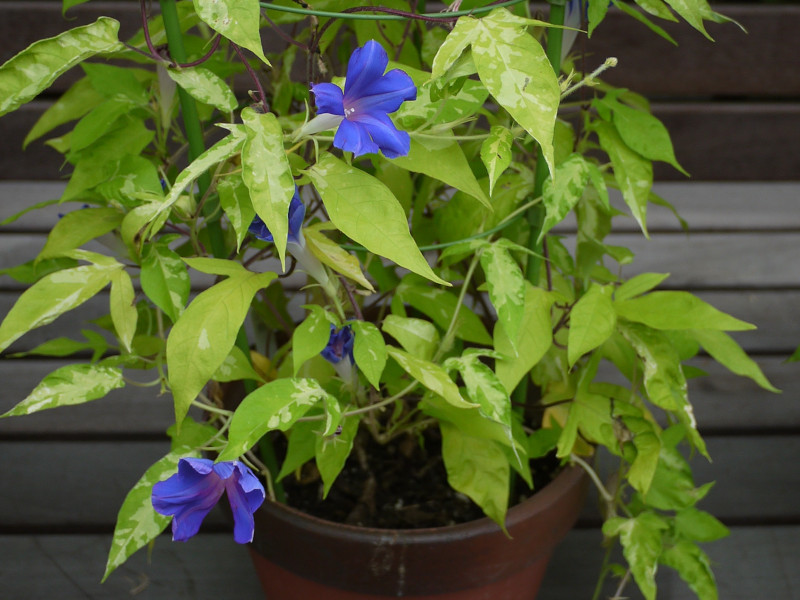Styrax obassia
- Flower nameStyrax obassia
- Scientific nameStyrax obassia
- Aliasオオバジシャ, 白雲木, 大葉萵苣
- Place of originJapan
- Place of floweringGarden, Botanical Gardens, Park, Streets, Planting
- Flowering seasonApril, May
What is Styrax obassia
Styrax obassia, commonly known as Japanese snowbell, is a deciduous small tree native to Japan and China, belonging to the Styracaceae family. It typically reaches a height of 5 to 15 meters with a trunk diameter of around 25 cm. The bark is dark gray in color. The leaves have hairy petioles measuring 1 to 2 cm. They are circular, ranging from 10 to 20 cm in length and 8 to 20 cm in width, with densely arranged star-shaped hairs on the underside, giving them a whitish-green appearance. The prominent veins and serrated margins are characteristic features, and the leaves are arranged alternately on the stem.
In Japan, around the Golden Week holiday in May (early May), it produces racemes measuring 8-17cm in length, from which it blooms 15-20 downward-facing white flowers with a cup-shaped corolla that is 1.7-2.0cm long and has 5 lobes. Each flower has 10 stamens and 1 pistil. The flowers fall off after about a week of blooming. In September, numerous small spherical capsules form and remain attached to the axis until the following year when the flowers bloom again. It is used as ornamental tree in gardens, parks, and along streets, and its wood is used for woodturning.
The difference between Styrax obassia and Styrax japonica
The difference between Styrax obassia and Styrax japonica, both belonging to the same family and genus and having similar flowers, lies primarily in their leaf size.
Styrax obassia, commonly known as "Hakunboku," in Japan has larger leaves compared to Styrax japonica, also known as "Egonoki" or "Jisha."
Styrax obassia, due to its larger leaves, is sometimes referred to as "Oobajisha," meaning "large-leaved Styrax."
Additionally, the leaf shape of Styrax obassia tends to be more rounded, while that of Styrax japonica is narrower.
Moreover, there is a distinction in the length of the flower stalks. Styrax obassia typically has shorter flower stalks, whereas Styrax japonica has longer ones.
Common name: Styrax obassia, Aka: Hakuunboku, Scientific name: Styrax obassia, Origin: Japan, China, tree height: 5 to 15 m, tree diameter: 25 cm, bark color: dark gray, leaves: single leaf, leaf order: alternate, leaf height: 10 to 20 cm, leaf width: 8 to 20 cm, leaf shape: Behind: the star bristles are dense and white green and the veins stand out, petiole: 1 to 2 cm, hairy, leaf margin: tooth sawtooth, radial symmetry, inflorescence form: general inflorescence, inflorescence length: 8 to 17 cm, stamen length : 10, number of pinch: 1, flower color: white, flowering period: early May, flower length: 1.7 to 2.0 cm, fruit type: fruit shape, fruit shape: spherical shape, seed period: September.
